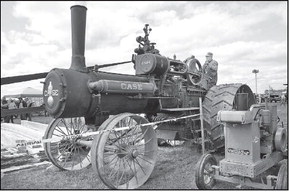Cover crop payments needed, says UW expert
President Joe Biden’s proposal to pay U.S. farmers to plant cover crops and sequester carbon in the soil is both needed and necessary.
That’s according to Dr. Paul Mitchell, professor of agricultural and applied economics at UW-Madison.
Biden made public his plan in remarks to Congress last week Wednesday. The proposal was contained in a single phrase: “Farmers planting cover crops, so they can reduce carbon dioxide in the air and get paid for doing it.”
Mitchell said the cover crops initiative will attack two environmental problems at once---global warming and soil erosion that, besides polluting rivers and lakes, threatens the long-time productivity of American farmland.
A no-till field planted with cover crops--such as rye, peas or various clovers-- keeps carbon locked in the soil, while, at the same time, armors farm fields from rain events that wash away dirt.
The professor said erosion rates of U.S. cropland are half of what they were in 1982, but, since 1997, progress to further reduce erosion has stalled.
No till cropping and cover crops are helpful to halt erosion, he said, but, since 1998, farmers have continued to plow up fields as they have in the past.
The reason is simple enough, Mitchell said. Cover crops just aren’t profitable.
“If cover crops were money makers, farmers would be clamoring to plant them,” he said. “Not all farmers are stupid.”
Mitchell said lack of profitability is a key reason why paying farmers to plant cover crops will be necessary. Doing so, he said, could help farmland, especially in the Midwest, remain productive over the long-term.
The professor said soil erosion was “a real problem” and reports that large sections of the nation’s Corn Belt in Iowa, Minnesota and Wisconsin have suffered crop yield reductions up to nine percent because of a loss of productive topsoils. Farmers make up for the loss in productivity by applying higher rates of fertilizer and relying on more productive seed varieties, he said, but these are only short-term fixes to a long-term problem.
Mitchell said cover crops can help sequester carbon in the soil but, according to recent studies, this is a longterm proposition. It can take up to a decade to noticeably increase soil carbon, he said.
Since 2012, Wisconsin farmers, said Mitchell, have planted cover crops over six percent of farm acres. That percentage is not moving, he said, but there is promise that grazing livestock on cover crops on land growing cash grain could turn a better profit and lead to more cover crop acres.
Mitchell said he expects something to come out of Biden’s announcement, but he is unsure whether the new administration will better fund existing Natural Resources Conservation Service programs, like EQUIP, that already pay farmers to plant cover crops or start a brand new program. “They could call it Cover Crops USA,” he said.
Mitchell said Wisconsin farmers, even those less concerned about climate change, would be happy to plant cover crops if they get paid by the government to do so. “It’s like those organic farmers who don’t necessarily believe in organic, but, if it’s a way to make money for their families, they do it,” he said.
Mitchell said he is unsure whether Washington, D.C. can muster “the social and political will” to approve cover crops legislation.
He said it is politically daunting to tackle long-term programs in the here and now. “It’s hard to get excited by these programs when you are going to be dead in 20 years,” he said. “You pass and you hand the problem over to somebody else.”
Mitchell said a proposed DNR rule change in Wisconsin would, if approved, also encourage the use of cover crops.
He said new state agriculture performance standards would demand manure in sensitive acres be applied after Sept. 1 only on cropland planted with a cover crop that has a need for nitrogen.
The standards would be required for all farms with Nutrient Management Plans, which includes Concentrated Animal Feeding Operations (700 or more dairy cows) or farms that get a Farmland Preservation per acre payment.
The proposed rule change is expected to come before the Wisconsin Natural Resources Board in September 2021 for a vote.


